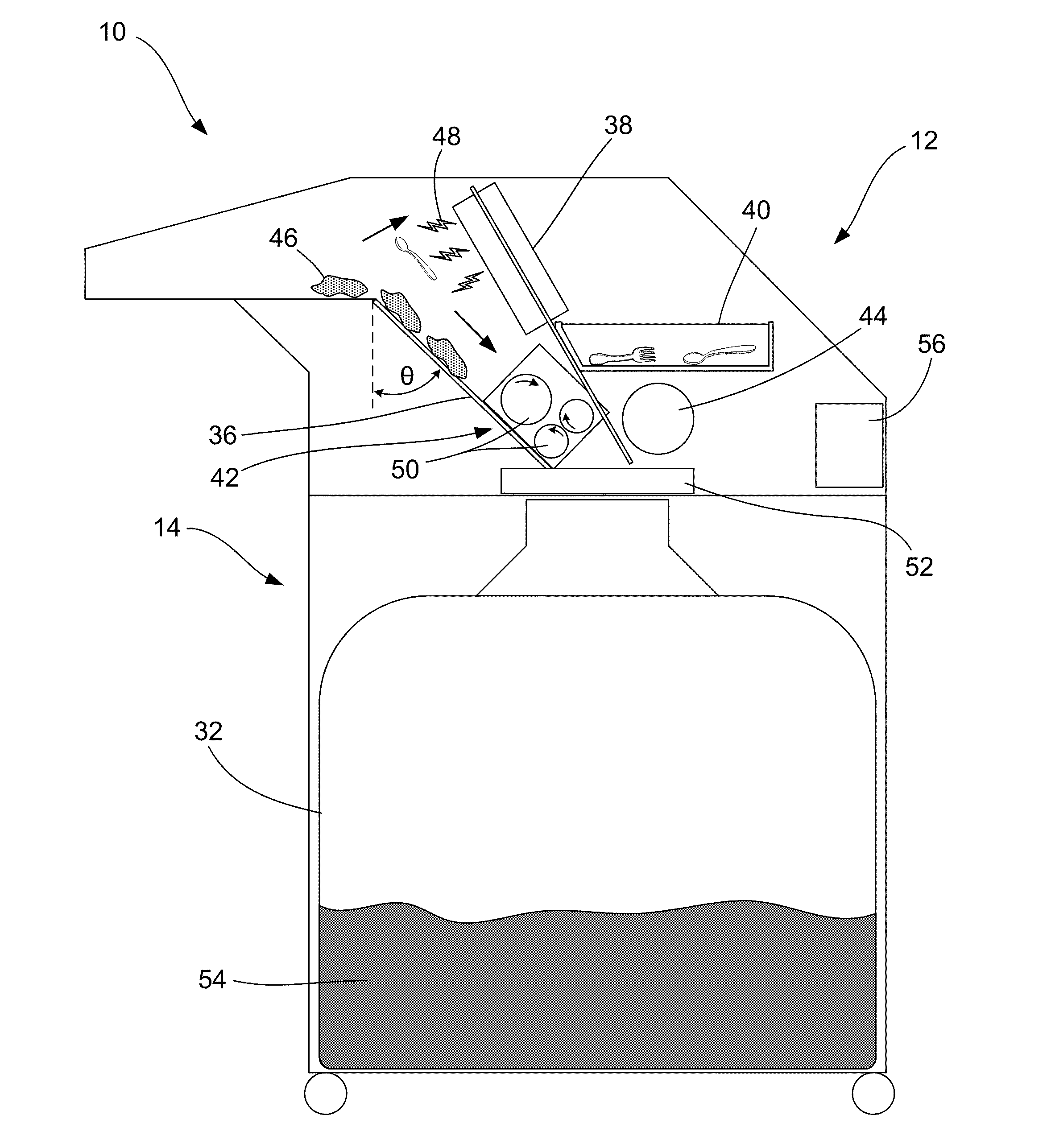Garbage shredding process and products
a garbage and process technology, applied in the direction of cocoa, solid separation, sorting, etc., can solve the problems of polluting the groundwater, less than 3% of the food waste generated in the united states is recycled, and inefficient use of energy invested in producing food in the first place, so as to achieve the effect of convenient movemen
- Summary
- Abstract
- Description
- Claims
- Application Information
AI Technical Summary
Benefits of technology
Problems solved by technology
Method used
Image
Examples
Embodiment Construction
[0030]Detailed embodiments of the present invention are disclosed herein, however, it is to be understood that the disclosed embodiments are merely exemplary of the invention, which may be embodied in various forms. Therefore, specific functional or structural details disclosed herein are not to be interpreted as limiting, but merely as a basis for the claims and as a representative basis for teaching one skilled in the art to variously employ the present invention in virtually any appropriately detailed embodiment.
[0031]By way of overview, the present invention is generally directed to improved systems and methods for processing and storing waste for subsequent use in biofuel conversion processes. The present invention specifically provides for a system for collecting and processing refuse, specifically food waste, for subsequent use as an alternative energy source. In one embodiment, for example, a portable modular waste processing system is provided. The system includes a top hou...
PUM
 Login to View More
Login to View More Abstract
Description
Claims
Application Information
 Login to View More
Login to View More - R&D
- Intellectual Property
- Life Sciences
- Materials
- Tech Scout
- Unparalleled Data Quality
- Higher Quality Content
- 60% Fewer Hallucinations
Browse by: Latest US Patents, China's latest patents, Technical Efficacy Thesaurus, Application Domain, Technology Topic, Popular Technical Reports.
© 2025 PatSnap. All rights reserved.Legal|Privacy policy|Modern Slavery Act Transparency Statement|Sitemap|About US| Contact US: help@patsnap.com



